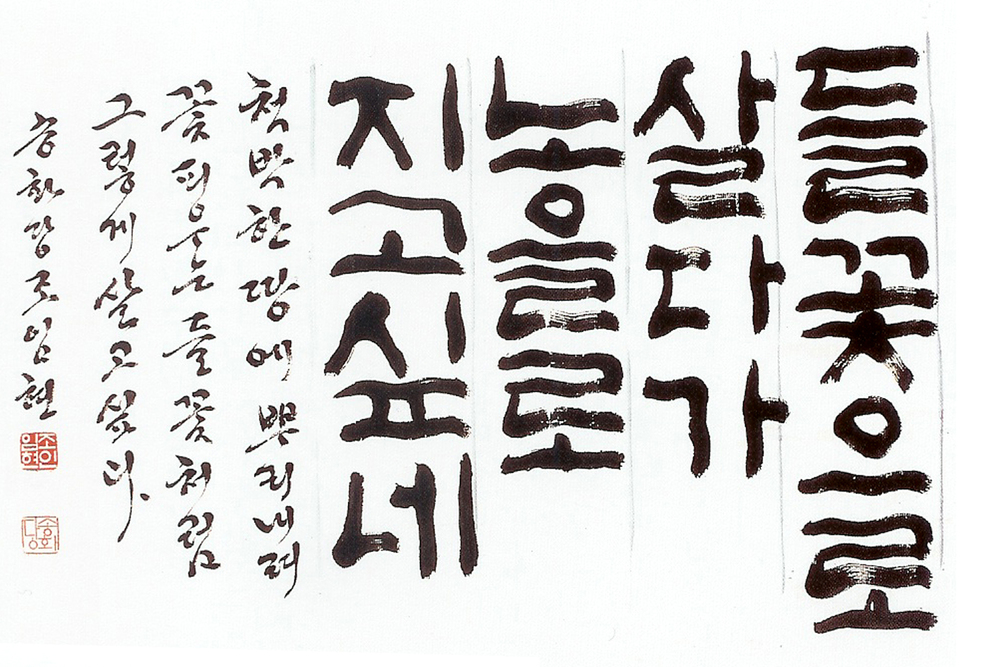Australia has experienced sustained population growth for many decades. In 1996 the population was 18.3 million, at the end of 2017 it was close to 27 million. (
1_ WAVES
The first wave of Korean migration which took place in 1972–75 was triggered by circumstances largely beyond the domain of Australian authorities. It was during this period that the Republic of Korea (South Korea) began to withdraw its citizens from military and non-military service in the Vietnam War (1954–75). Rather than returning to Korea, many of these Koreans, mostly men, sought work and opportunity in other places, including the Americas, West Germany, the Middle East and South Vietnam.
Korean migrants all over the world draw a well-understood distinction between the 'one-point-five' and second generations. Second generation broadly denotes the local-born children of Korean immigrants. These immigrants comprise the first generation, such as amnesty and container migrants, and were generally adults at their time of arrival.
The 1.5 generation describes those Korean-born who arrived in Australia at a young age, especially with their first-generation migrant parents, and these are popularly characterised as having a reasonably deep appreciation for both the Korean and local cultures and languages, in contrast to the second generation who are stereotyped or lamented as being dismissive of Korean culture and as having relatively limited Korean language proficiency
Although Australia's foremost individual Korean arrivals were mostly to Melbourne, the most sizeable and visible evidence of 'organised community' among Koreans is found indisputably in Sydney. To see data from Victoria (Melbourne, click
here)
Social-cohesion
report finds satisfaction of immigrants who were from South Korea was on the 60-75%, relatively low comparing with migrant from other countries. The survey showed new arrivals from 2001 to 2015 are optimistic, with just 6 per cent indicating they are 'strongly dissatisfied' or 'dissatisfied'. 76 per cent indicate they are 'satisfied' or 'very satisfied'. 62 per cent of newest arrivals say they are happy in Australia.
The church is central to the migrant experience of most of Koreans. As well as being a place of worship, it is a key site of ethnic identity affirmation and an important point of social contact with other Koreans. Christians make the largest group, with a third of them Catholics. About 30% do not identify with religion denominations.
2_ LOCATION: SNW__Sidney
The Korean community in Sydney first became palpable in the early 1970s. The community has continued to expand in numbers and nature. This is reflected by various structures around which the Korean community in Sydney is organised. Notable organisations include over 150 Korean-language Christian church congregations, multifarious business enterprises, and an established Korean language text and broadcast media which includes both local and imported materials and information.
Several initiatives such as the Korean Society's annual youth forum, the growth of English language ministries within the ethnic Korean churches, the burgeoning voice of Korean overseas students on Sydney's university campuses, and the vibrancy of Sydney's Korean media suggest that the community does share a collective awareness and is prepared to actively engage this awareness.
Eastwood would be our biggest Korean suburb. Besides, Chatswood has several Korean restaurants and shops , so do Ashfield and Campsie.
3_ EDUCATION -pre university:
There were close to 500.000 international students studying on a student visa
in Australia in 2015. This represents a 10 per cent increase over 2014
figures. Koreans are about 20.000, with a majority e aged 20-35. Republic of Korea had larger share of students in vocational education
and training (VET) than in higher education.
K-10. Students aim for foreign education, English skills. Wild geese families and penguin parents
The result is these kids are academically at least two to three years ahead of their peers, but they are often also stressed out and depressed.
Some "wild geese families" want to escape the relentless Korean system; but for most it is about ensuring their children go back to South Korea with a huge educational advantage.
Not that they think the Australian education system is better: they are here purely to improve their English language skills. That is the real currency.
Usually it is the mother who travels with her children to the English-speaking country, leaving the father behind in South Korea to keep working and enable the travel to take place.
The top 3 destination is Australia- these kids are part of the foreign-student-fee-paying bonanza reported in some of the nation's public schools in the last 5 years.
Check the play:
Wild Goose Dreams
4_ EDUCATION-University
Korean Studies is an interdisciplinary area of research and critical analysis on cultures, societies, philosophical thought and language of the Korean peninsula and its diaspora which complements a number of existing disciplines within social sciences, humanities and sciences. With the rapid economic development of the Republic of Korea (South Korea), and its position as the third biggest trading partner for Western Australia, Korean Studies is an increasingly important area of study that equips students with not only linguistic, but also intercultural competence. Such understanding is required of a successful graduate in the contemporary world where Asia plays an increasingly important part, not only as an economic but also as a cultural power.
Some universities students can do Bachelors level courses for the first two years of their studies and then elect to take Masters level courses in the third and fourth years.
Deakin University is an Australian public university with approximately 53,000 higher education students in 2016. Established in 1974. Find their English language requirements on its course pages.




![South Korea's first black model Han Hyun-min, whose father is Nigerian and mother Korean, grew up in Seoul and identifies as Korean [Courtesy of SF Models/Photograph by Park Jong-soon]](https://www.aljazeera.com/mritems/imagecache/mbdxxlarge/mritems/Images/2017/4/12/799ad2acb47c4a1691887ec450d9db45_18.jpg)



